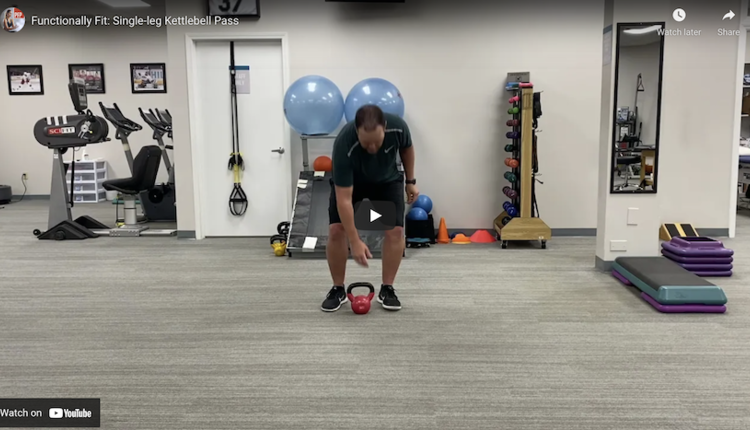
Improving lower extremity balance is important as it begins to decline in the third decade of life. In addition, training the hips to resist internal rotation and frontal plane collapse is important for knee injury prevention. This exercise will effectively do both.


Execution:
Begin standing on the left leg with 2-30 degrees of bend in the knee. Choose a light kettlebell to begin with as to avoid too much instability. Start with the kettlebell in the right hand. Next, slowly pass it to the left hand and lift the left arm away from the body 30-45 degrees. Pause for 1-2 seconds and then repeat this sequence on the right side.
Perform 5-10 repetitions on each side while focusing on keeping the stance knee pointing straight ahead at twelve o’clock.
Progressions:
1) Increase the hold time on each pause
2) Increase the weight
3) Move to an unstable surface (stability training or aired pad)
Regressions:
1) Reduce the resistance
2) Decrease the range of motion (amount of shoulder abduction) during each pass
Application:
This exercise is intended to enhance lower extremity stability from the ground up. Flexing the knee will help engage the posterior chain and activate the quadriceps. Cueing the client to avoid frontal plane collapse and rotation will improve proprioception, proximal hip strength and balance. The kettlebell introduces an unstable pattern in the upper extremity forcing the lower body to react and maintain stability. This exercise is effective for training clients with balance deficits, ankle instability, patellofemoral pain, or poor proximal hip strength/stability.




















